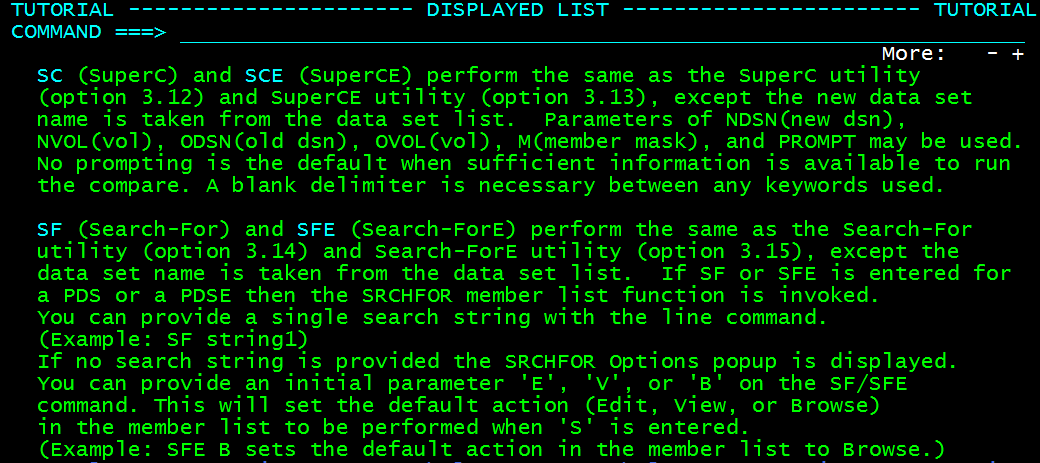This article first appeared on ispf4users.blogspot.com and is used here by permission.
ISPF Search For (options 3.14 and 3.15) is a function of the program SUPERC which is also a compare utility (options 3.12 and 3.13). These utilities can be invoked directly from a data set list (DSLIST or 3.4) using line and primary commands.
Watch the 2 1/2 minute video on YouTube
The line commands are entered to the left of a data set name on the list.
SC - SUPERC Compare invokes the 3.12 option.
SCE - SUPERC Compare, Extended invokes the 3.13 option.
SF - Invokes basic Search For, option 3.14.
SFE - Invokes the Search For, Extended option (3.15).
SF can be invoked with or without a search string.
Another way to run a Search, is to type the command: SRCHFOR, on the DSLIST command line or on a member list. On a data set list, this searches all the data sets on the list. The search options include whether or not to search excluded data sets and migrated data sets. On a member list, SRCHFOR searchs all the members on the list.
SRCHFOR, SF, SFE, SC, and SCE produce a listing which you need to open in order to see the results. I recommend using the option: View Output, which is at the bottom right of the search option window to avoid having to go find the output data set. It is also recommended to use the command: HI SUPERC when viewing or editing the output from a search or compare.

The compare utility also includes a COMPARE command that can be issued while using EDIT or VIEW on a file or member. One of the best options for this command is: COMPARE *, which compares the file you're editing to the saved version of the same file.
You can also use: COMPARE member to compare the file you're editing/viewing to another member in the same data set - and - COMPARE 'data.set.name(member)' to compare the file you're editing to another file or a member of a different data set.
When using the COMPARE command in edit or view, the results are returned to your session with the lines from the local file labeled (.OAOOO for example) and the lines from the other file displayed using ====== in the prefix field where the line numbers normally appear.

